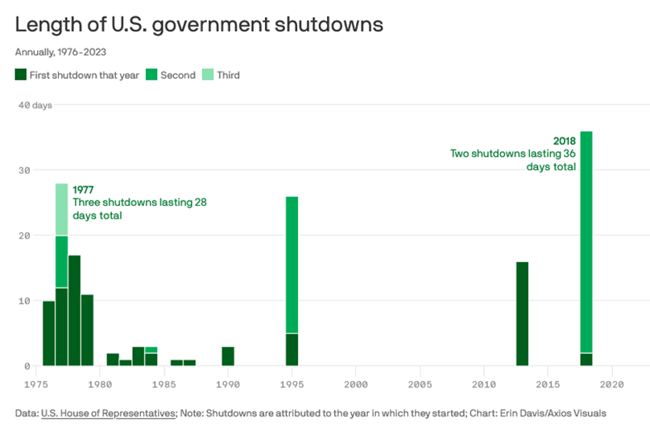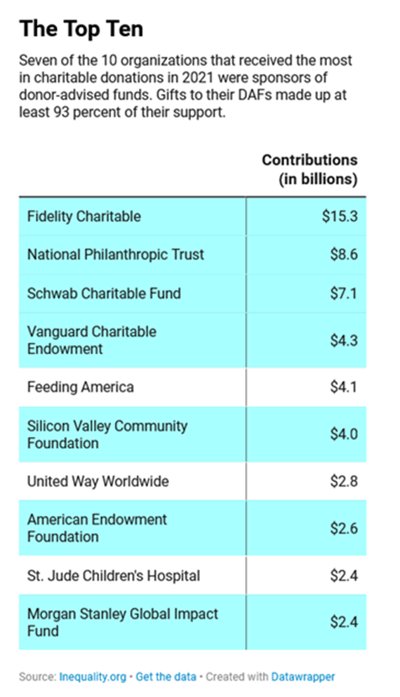.png?width=300&height=300&name=Email%209.12%20Rossi%E2%80%99s%20Roundup%20(1).png) The media has been filling our feeds with stories on the government shutdown (now kicked to November with a stopgap bill), student loan reversal, oil price hikes, union strikes and the Louisiana saltwater intrusion. Instead of focusing on all the negativity, let’s talk about something beautiful and relaxing: fall foliage.
The media has been filling our feeds with stories on the government shutdown (now kicked to November with a stopgap bill), student loan reversal, oil price hikes, union strikes and the Louisiana saltwater intrusion. Instead of focusing on all the negativity, let’s talk about something beautiful and relaxing: fall foliage.
It’s always wonderful to see fall arrive. If you’re not attempting a foliage trip this year, you can at least dream about one. Here’s a great site to give you the ultimate visual planning guide to the annual progressive changing of the leaves across the U.S.
Shoutout to The Atlantic, which posted about a recent Skidmore College study, The Scientific Case for Two Spaces After a Period. OK, it was a small study of students—but it vindicated my need for two spaces.
The study showed there was an increase in reading speed of 3% when reading text with two spaces following periods, as compared to one. This is an average of nine additional words per minute above their performance under the one-space conditions.
Hey, have you registered for the free Fundraising.AI Virtual Global Summit? This Summit will be the largest gathering of nonprofit and for-profit professionals and organizations to explore the role of Responsible AI in fundraising. The inaugural Summit will take place on Oct. 23-24. You can find out more about the Summit—and register—by visiting the event website.
One last note before we dive into the roundup. Just around the corner, we have two more great Fundraising Refreshment webinars—please register for these:
Nonprofits: Get more out of GA4
Oct. 12 | 1:30PM CDT
Google Analytics 4 is here—there’s no turning back. But getting the insights you need isn’t as simple as before. Jenn Thompson and Kord Hickson review the reports that every nonprofit should create. Register today.
Last-minute tips for Giving Tuesday Success
Oct. 26 | 1:30PM CDT
Giving Tuesday grows larger every year, which also means that it’s tougher to stand out in the crowd. Evan Arcoria shares some last-minute strategies you can implement to be more effective. Register today.
OK, it's time. Grab your favorite beverage and jump into what I’ve been reading since my touchpoint last month.
1. Americans are still spending like there’s no tomorrow
 Concerts, trips and designer handbags are taking priority over saving for a home or rainy day. Interest rates are up. Inflation remains high. Pandemic savings have shrunk. And the labor market is cooling. Yet household spending, the primary driver of the nation’s economic growth, remains robust.
Concerts, trips and designer handbags are taking priority over saving for a home or rainy day. Interest rates are up. Inflation remains high. Pandemic savings have shrunk. And the labor market is cooling. Yet household spending, the primary driver of the nation’s economic growth, remains robust.
Americans spent 5.8% more in August than a year earlier, well outstripping less than 4% inflation. And the experience economy boomed this summer, with Delta Air Lines reporting record revenue in the second quarter and Ticketmaster selling more than 295 million event tickets in the first six months of 2023—up nearly 18% year-over-year.
A tough housing market has more consumers writing off something they’d historically save for, while the pandemic showed the instability of any long-term plans related to health, work or day-to-day life. So, people are spending on once-in-a-lifetime experiences because they worry they may not be able to do them later.
“It’s not a regret-filled, spur-of-the-moment decision,” says Michael Liersch, who oversees a team of advisers as head of advice at Wells Fargo. “It’s the opposite of that, where I would regret not having done it.”
2. The history of government shutdowns and how long they last
 Under a government shutdown, non-essential federal functions are suspended. Systems including health programs, Social Security and Medicare, SNAP benefits, Food and Drug Administration inspections and small business loans would be affected.
Under a government shutdown, non-essential federal functions are suspended. Systems including health programs, Social Security and Medicare, SNAP benefits, Food and Drug Administration inspections and small business loans would be affected.
All employees—those who stop working and those whose roles are deemed "excepted"—aren't paid during the shutdown. Their paychecks catch up when operations resume.
At 34 days, the longest government shutdown was also the most recent—from late 2018 to early 2019—during former President Donald Trump's administration. The shutdown ended with a concession from Trump on immigration, as he did not receive the funding he had demanded for a border wall.
This time around, Trump has lent his support to the Republican holdouts who oppose any compromises to keep the government running. Past shutdowns have often pitted the party in control of Congress against the president. In this case, it has to do more with dynamics within the House Republican caucus, with hardliners opposing spending agreements endorsed by their own leadership.
Previously, the longest shutdown lasted 21 days, from 1995 to 1996, under then-President Bill Clinton, who was at an impasse with House Speaker Newt Gingrich.

3. Private and family foundation giving increased amid economic uncertainty
![]() A recent report found that in the face of economic instability, foundations gave $111 million more in charitable aid in 2022, totaling $865 million compared to $754 million in 2021. This was despite a 31.5% drop in their asset value and 14.5% decline in growth, reflecting the impact of a challenging economic climate.
A recent report found that in the face of economic instability, foundations gave $111 million more in charitable aid in 2022, totaling $865 million compared to $754 million in 2021. This was despite a 31.5% drop in their asset value and 14.5% decline in growth, reflecting the impact of a challenging economic climate.
The 980 foundations in the study made a total of 31,373 grants in 2022 representing $865 million in charitable aid. This is a 7% increase in grants and 15% increase in dollars granted over the prior year.
4. Nonprofits and the trust problem: New signs of worry for the field
 In a worrying sign for the sector, Americans’ trust in nonprofits dropped compared with the previous year, according to a survey released Sept. 26. The fourth annual study of trust in civil society found that the observed decline in trust in nonprofits accelerated in 2023. Trust in philanthropy, while lower, held steady.
In a worrying sign for the sector, Americans’ trust in nonprofits dropped compared with the previous year, according to a survey released Sept. 26. The fourth annual study of trust in civil society found that the observed decline in trust in nonprofits accelerated in 2023. Trust in philanthropy, while lower, held steady.
This year’s report reveals the broader headwinds contributing to nonprofits’ trust decline, as well as the impact of factors unique to the sector. The survey also found:
- Less than half of Americans have a high degree of trust in environmental and civil-rights groups and civic organizations. Organizations earning a relatively high level of trust include human services, animal welfare and health nonprofits.
- Eight in 10 respondents said they would continue to support only nonprofits that clearly demonstrate their impact.
- The survey showed that nearly 70 percent of people are more likely to trust an organization with a presence in their local community.
Nonprofit messaging that focuses on charities, health and human services, and benefit for all is most effective at building sector trust. Sector messaging should focus on values statements rather than solely data points, which are less effective.
For more details into the forces that drive donors' trust in nonprofits, read our research "Solid Gold: The Nonprofit Marketer's Guide to Trust."
5. A short history of the fast and furious rise of DAFs
 Go to the article to see the brief history of the runaway growth of DAFs. To summarize, in another sign of philanthropy’s changing balance of power: Donations to DAFs accounted for 22 percent of all charitable giving in 2021. Gifts to foundations, meanwhile, made up just 15 percent—the first time that DAFs netted more dollars than foundations.
Go to the article to see the brief history of the runaway growth of DAFs. To summarize, in another sign of philanthropy’s changing balance of power: Donations to DAFs accounted for 22 percent of all charitable giving in 2021. Gifts to foundations, meanwhile, made up just 15 percent—the first time that DAFs netted more dollars than foundations.
Debate over DAFs has moved from philanthropy to Congress, which is considering legislation to spur distributions from inactive funds. The bills, however, aren’t likely to take wing soon.

In the meantime, what is your plan to grow donor advised funds and IRAs during Q4?
6. Hunger Games in America
 More Americans are scrimping on food. A new survey from data intelligence company Morning Consult found that lower-income households have been cutting back on food purchases as inflation eats away at their budgets.
More Americans are scrimping on food. A new survey from data intelligence company Morning Consult found that lower-income households have been cutting back on food purchases as inflation eats away at their budgets.
Morning Consult's survey tracks with separate data from the U.S. Census Bureau (Household Pulse Survey Data Tables), which found that the number of households saying they didn't always have enough to eat this summer climbed to the highest level since late 2020.
Key takeaways:
- Consumers of all income levels pulled back on spending, led by high and middle earners
- Student debt burden may already be reshaping purchasing patterns for young adults
- Price sensitivity remains elevated for most categories despite slowing inflation
- Consumers pulled back on spending in August as more households prioritized saving and paying down credit card debt.
- Heading into the fall, spending on discretionary categories is likely to wane as younger and higher-earning adults, who have propped up these categories, begin to pull back on their spending.
- Inflation picked up in August, driven mainly by higher energy costs, as elevated prices for a range of goods and services continue to impact purchasing decisions.
7. Pet shelters fill up in hard times. Student loan payments could leave many with hard choices.
 Shelters have already had it rough in the past few years, with many now existing in an ongoing status of crisis. Shelters and rescues have seen more animals coming in than leaving, especially in the years since the onset of the pandemic, leaving them at a critical level of resource strain.
Shelters have already had it rough in the past few years, with many now existing in an ongoing status of crisis. Shelters and rescues have seen more animals coming in than leaving, especially in the years since the onset of the pandemic, leaving them at a critical level of resource strain.
According to Shelter Animals Count, a nonprofit working with more than 7,000 rescue organizations nationwide and creators of The National Database of sheltered animal statistics, shelters are in their third year having too many animals and not enough adoptions. Dog adoptions especially have slowed down and are forecasted to remain flat or even dip below 2022 numbers. This poses a big problem, as dogs account for most of the 4% increase in shelter intake thus far in 2023; as of June, dog intake was up 15% compared to 2021.
Executive Director Stephanie Filer said that when her team began digging into trends, they found economic hardship to be one of the driving factors behind the overcrowding.
You can help by donating, fostering and/or volunteering.
8. Pet owners resort to cheaper food as inflation weighs on wallets
 Food and chew toys are normally untouched when budgets are stretched. That is changing. With the cost of pet food up nearly 11% from a year ago, according to the July consumer-price index, animal owners are trading down from more expensive gourmet brands or shifting to smaller pack sizes, finance chiefs and analysts said.
Food and chew toys are normally untouched when budgets are stretched. That is changing. With the cost of pet food up nearly 11% from a year ago, according to the July consumer-price index, animal owners are trading down from more expensive gourmet brands or shifting to smaller pack sizes, finance chiefs and analysts said.
Growth in non-premium pet food sales at U.S. public and private companies slowed to 14.8% for the second quarter of the year. That's compared to 20.8% growth in the first three months of 2023 and 18.3% a year earlier, according to an analysis of data from Circana by research firm Consumer Edge.
Premium pet food sales growth, meanwhile, decelerated to 8.5% in the second quarter, compared with 10.7% growth in the first quarter and 21.3% growth in the prior-year period, the data show.
“The commitment that a parent has to the animal is pretty meaningful and so they will continue to feed and treat their animal even in times of maybe less discretionary income,” Marshall said. This might mean trading down from premium products, he added, “but they’re still supporting their pet through any perceived troubled times.”
9. The new phone call etiquette: Text first and never leave a voicemail
 When is it OK to leave voicemails, call multiple times in a row or take a call in public? Phone calls have been around for 147 years, the iPhone for 16 years and FaceTime video voicemails for about a week.
When is it OK to leave voicemails, call multiple times in a row or take a call in public? Phone calls have been around for 147 years, the iPhone for 16 years and FaceTime video voicemails for about a week.
Not surprisingly, how we make calls has changed drastically alongside advances in technology. Now people can have conversations in public on their smartwatches, see voicemails transcribed in real time and dial internationally midday without stressing about the cost.
Here's the etiquette for today:
- Don’t leave a voicemail. Instead, text them ahead of time to ask if they’re free to talk now, if they can you call when they’re free, or if they can pick a time they’d like to chat
- Emotions are for voice, facts are for text. Many things don’t need to be a phone call at all. When you’re trying to decide on the best method of communication, consider what it is you want to say.
- Use video voicemails judiciously. Apple recently introduced a new feature in its iOS 17 update that lets you leave a video message when someone doesn’t answer your FaceTime call. It’s silly and fun and should be used that way, but keep in mind not everyone will find them delightful.
10. Check out more great posts, podcasts and webinars
 Blog updates:
Blog updates:
- Ease the pressure: 4 tactics food banks can implement for year-end giving
- Rethinking nonprofit tech: Why empathy must lead the way
- ChatGPT Enterprise: A game-changer for nonprofits and donor data
- Navigating the RFP process: Finding the right partner starts with you
Podcast updates:
- Ryan Ginard thinks about rejecting the status quo for nonprofit planning
- Rhea Wong thinks about nonprofit burnout and reconnecting with donors
- Ted Wagenaar thinks about why donors stop giving to organizations
- For more episodes, click here
Webinar recordings:
- AI tools you can use to boost your fundraising with Charles Lehosit
- Rebuild trust and reach new audiences at the same time with Nicole Daily
- Transform your newsletters to be donor-centric with Lisa Rossi
- Craft captivating videos that engage your donors with Chris Weiland
- How to build stories around your content with Billy Vaudry
- For more webinars, click here






Leave a comment: